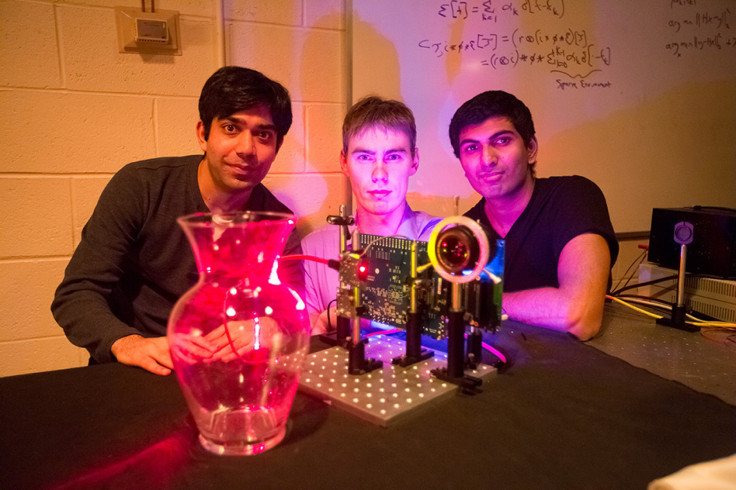Cheap $500 ‘Nano-Camera’ Could Be Used In Everything From Medical Imaging To Video Games
A cheap “nano-camera” that creates 3D maps based on how quickly light reflects back to the camera’s sensor could find a home in many fields, ranging from medical imaging devices to video games.

Ayush Bhandari, Refael Whyte and Achuta Kadambi, students from the Massachusetts Institute of Technology, have developed a cheap nano-camera that won’t be foiled by less-than-ideal conditions. The camera works by sending a light signal to determine the location of objects. The further away the object means a longer time for the signal to return to the camera’s sensor.
This technology, called “Time of Flight,” is similar to what is used in the Kinect camera that is bundled with the Xbox One to measure depth. The researchers state in the abstract, “Time of flight cameras produce real-time range maps at a relatively low cost using continuous wave amplitude modulation and demodulation. However, they are geared to measure range (or phase) for a single reflected bounce of light and suffer from systematic errors due to multipath interference.” The camera uses LED diodes that can be timed to pulse every nanosecond, to sweep the scene.
The problem with these cameras, which can recreate an environment in 3-D, is their spotty performance when confronted with fog or rain. The MIT students also note that these 3-D cameras cannot capture translucent objects, such as a glass vase. Kadambi explains in a statement, “Light that bounces off the transparent object and the background smear into one pixel on the camera. Using our technique you can generate 3-D models of translucent or near-transparent objects.”
Another problem is confusion caused by motion or semitransparent surfaces, rendering the camera unable to measure depth. The blur caused by motion is fixed in MIT’s nano-camera by an encoding process that is commonly found in the telecommunications field, say the MIT students. Ramesh Raska, an associate professor at MIT who helped developed the process, provides the analogy of how a camera uses motion blur reducing features to create sharp images.
The researchers see a broad range of uses for their cheap nano-camera. It could be used to beef up existing technology, such as improving the Kinect's detection ability, or used in medical imaging devices and collision-detecting devices in cars. A video of the nano-camera in action can be viewed below.
© Copyright IBTimes 2025. All rights reserved.






















